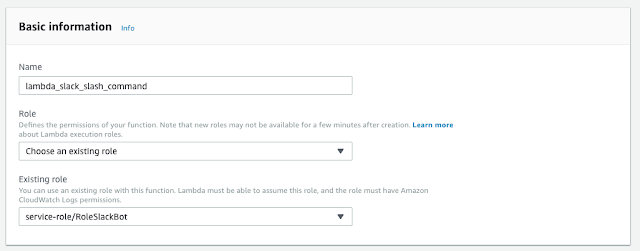CANtact v1.0 Open Source Controller Area Network (CAN) to USB Converter
References:



$ pip install jupyter_contrib_nbextensions
$ jupyter contrib nbextension install --user
$ jupyter notebook
 Detroit Autonomous Vehicle and Robotics Meetup
Detroit Autonomous Vehicle and Robotics Meetup  The new LattePanda Alpha Single Board Computer has ample 8GB of RAM, operates on 12V, can run a MacOS with TuriCreate Machine Learning and use massive GPU connected via the M.2 bus, hence making it an excellent in-vehicle machine learning platform.
The new LattePanda Alpha Single Board Computer has ample 8GB of RAM, operates on 12V, can run a MacOS with TuriCreate Machine Learning and use massive GPU connected via the M.2 bus, hence making it an excellent in-vehicle machine learning platform. References:
https://arxiv.org/abs/1810.04719
https://github.com/google/uis-rnn
https://catalog.ldc.upenn.edu/LDC2001S97
| Raspberry Pi 3B | 7-inch touchscreen | 7-inch case | 10.1 touchscreen | Infrared camera |
$ diskutil list
/dev/disk2 (external, physical):
#: TYPE NAME SIZE IDENTIFIER
0: FDisk_partition_scheme *15.9 GB disk2
1: Windows_FAT_32 PI3_RASBIAN 15.9 GB disk2s1
$ sudo diskutil unmountDisk /dev/disk2
Password:
Unmount of all volumes on disk2 was successful
$ sudo dd bs=1m if=/Users/uki/Downloads/2018-10-09-raspbian-stretch.img of=/dev/disk23944+0 records in3944+0 records out4135583744 bytes transferred in 3019.441172 secs (1369652 bytes/sec)
$ sudo diskutil eject /dev/disk2Password:Disk /dev/disk2 ejected
# shorthand
# sframe[3]['image'].show()
# image_testing_SFrame[0:5]['image'].explore()
sframe = image_testing_SFrame[0:5] # show first 5 records
def show_images(sframe, image_column="image", label_column="label"):
for subset_dictionary in sframe:
image = subset_dictionary[image_column]print(subset_dictionary[label_column])
image.show()
show_images(sframe, image_column="image", label_column="label")
show_images(sframe)
dogs_SFrame = image_training_SFrame.filter_by(values="dog", column_name="label", exclude=False)
print(dogs_SFrame["label"][0:15])
['dog', 'dog', 'dog', 'dog', 'dog', 'dog', 'dog', 'dog', 'dog', 'dog', 'dog', 'dog', 'dog', 'dog', 'dog']
animals = ["dog", "cat", "bird"]
animals_SFrame = image_training_SFrame.filter_by(values=animals, column_name='label', exclude=False)
print(animals_SFrame["label"][0:15])
['bird', 'cat', 'cat', 'dog', 'bird', 'dog', 'bird', 'bird', 'cat', 'dog', 'cat', 'bird', 'cat', 'cat', 'dog']
training_sframes = {}
for label in unique_labels:
#print (label)
training_sframes[label] = image_training_SFrame.filter_by(
values = label,
column_name = "label",
exclude = False)
for key_name in training_sframes: # dictionary training_sframes
print(key_name)
labels_column_SArray = SFrame_DataSet['label']
print(type(labels_column_SArray))
unique_labels = labels_column_SArray.unique()
print(unique_labels)
['bird', 'dog', 'cat', 'automobile']
 I have learned that none of my GUI Mac programs were able to expand the 13 GB dataset, however, the command line had no problem with it.
I have learned that none of my GUI Mac programs were able to expand the 13 GB dataset, however, the command line had no problem with it.$ tar xvzf BIG_DATASET_MANY_THOUSANDS_FOLDERS.tar.gz
$ tar xvfz BIG_DATASET_MANY_THOUSANDS_FOLDERS.tar.gz /directory_path
# parameters:
# -a --archive; look at everything recursively
# -i; --itemize-changes; print update about each file
# -h; --human-readable
# -W; --whole-file; avoid file deltas
# --progress; show progress in terminal
# --log-file=XYZ.log; log the progress to file, this might be useful when resuming
$ rsync -aW source_directory/ destination_directory/
$ conda env export > environment_turi_20181105.yml
rm -r .... /anacondaX/
conda env create -f environment_turi_20181105.yml
$ conda activate turi
$ conda env list
# conda environments:
#
/Users/uki/.julia/conda/3
/Users/uki/.julia/packages/ORCA/uEiWT/deps
base /anaconda2
turi * /anaconda2/envs/turi
python -m ipykernel install --user --name turi --display-name "Python 2.7 (turi)"
$ jupyter notebook
$ source activate py36
$ conda env list
# conda environments:
/Users/uki/.julia/conda/3
/Users/uki/.julia/packages/ORCA/uEiWT/deps
base /Volumes/DATA/anaconda3
py2 /Volumes/DATA/anaconda3/envs/py2
py36 * /Volumes/DATA/anaconda3/envs/py36
$ conda install -c derickl turicreate
$ conda install ipykernel
$ conda update --all
python -m ipykernel install --user --name py36 --display-name "Python 3.6 Turi (env py36)"
Installed kernelspec py36 in /Users/uki/Library/Jupyter/kernels/py36
$ conda env export > environment_py36_20181102.yml
$ jupyter notebook
import turicreate as turi
WARNING: You are using MXNet 1.2.1 which may result in breaking behavior. To fix this, please install the currently recommended version: pip uninstall -y mxnet && pip install mxnet==1.1.0 If you want to use a CUDA GPU, then change 'mxnet' to 'mxnet-cu90' (adjust 'cu90' depending on your CUDA version):
(py36) $ pip uninstall -y mxnet && pip install mxnet==1.1.0